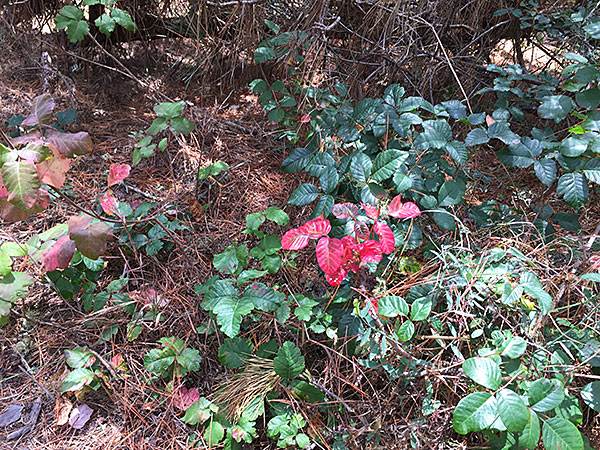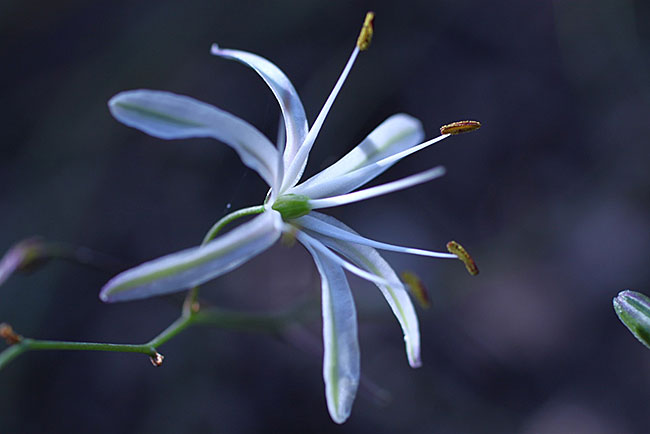What to Look For Now in Jacks Peak Park June 2015  Poison oak conserving energy (Photograph: Mary Pendlay) By Mary Pendlay This time of year at Jacks Peak Park reflects the contrast between the north and south-facing slopes. At its peak, the gradual slope of 1,096 feet is easy to traverse, to walk and enjoy the natural plants and wildlife. This year, after many dry seasons, the differences between north and south slopes are dramatic. The poison oak, safely removed from the trail, is very apparent on the northern slope where it's cooler. The red leaves are already appearing because the roots lack moisture and know that it's time to conserve, like a deciduous tree that turns color. To see red leaves so early in the year is lovely, but a sign that the plant is distressed. Not to worry, poison oak is tough, but not tough enough to grow on the southern slopes where it's really warm from the wind currents coming up from Carmel Valley. Far from this heat, the Indian soap plant is ready to bloom, and it is a survivor, with a beautiful flower. This time of year, there are numerous flower stalks blooming in the warm afternoon sun even as the leaves begin to wither. Appearing mostly in shade areas, the pine and oak trees provide enough shade for the soap plant's bulb to reproduce every year. The Rumsien/Ohlone Indians used this plant like the ceanothus flower, as a cleanser. Jacks Peak Park reveals contrasted environments because its Monterey Pine forest is central to our area, which can be dramatic.  Soap plant in bloom. (Photograph Mary Pendlay)
< back to all issues
|

